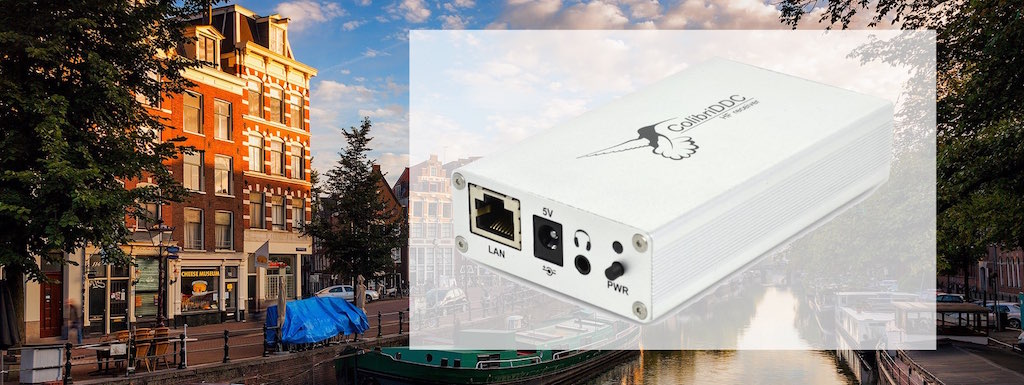Fun with SDR in a City Apartment

DXing in urbanised areas is getting more and more difficult. The level of man made noise has increased dramatically in the past 20 years because of cheap Chinese switch mode power supplies, plasma TVs and other noise generating equipment. This article will focus on the receive part of DXing, because even if transmit in urban areas can be challenging, receiving weak signals covered by noise is a far bigger hurdle to everyone. Keep reading, in this article we’ll give you some ideas to make city DXing a little more fun.
A SDR, Software Defined Radio receiver like the ColibriDDC is a good choice for MW and HF listening from a city apartment. In addition to being a good receiver the panadapter’s graphical display of the frequency spectrum really helps in understanding and eliminating local noise. This is especially true if you have a directional antenna that you can rotate (more on this later).
In urban areas loops are preferred over dipoles and other open-ended antennas like longwires. A small loops is the obvious choice. If you have a small garden a Pennant or Flag might be your best choice, but in an apartment a small loop is the preferred antenna of choice. A small loop can either be tuned to a specific band or frequency, or it can be a broadband loop. A tuned loop is very narrow banded and can work like a band pass filter which makes it a less useful antenna for getting the most out of the wide band capabilities of your SDR receiver.
For the purpose of general MW or HF listening from an apartment we recommend using a small active broadband loop. The best place for a small loop is to put it outside on the balcony if its facing the direction of interest. Second best is a loop in a window, again facing the direction of most interest. Small loops have very sharp nulls in broadside directions making them excellent tools for noise reduction.
Really good results can be achieved by adding a small rotator to you loop. This makes it possible to null out any noise or any offending signals interfering with the DX you are trying to copy. A rotator might sound like a big investment, but there are ways to get your loop rotating for less than EUR 50.00. A good idea is to browse Ebay for cheap rotatable TV antennas. They usually come with everything you need to install a small, rotatable TV antenna. The rotor is controlled using a base unit which usually has an infrared remote. At the time of writing antennas like this where advertised with a price tags down to around $30.00.
Once you get your rotatable TV antenna delivered you have to be a little creative finding a way to attach your antenna to the rotator. Some rotators are detachable from the antenna, others are part of a more integrated solution. I leave it to you to figure out how to solve this.

When using the rotator you are not looking for the direction of the strongest signal. Why you might ask? The loop has a pretty wide opening, so there is no point aiming it in the direction of the signal you are listening to. The way you want to use it is to take advantage of its sharp nulls in broadside directions. Just turn the rotor until the offending signal or the QRN from the neighbour’s phone charges is minimised. You’ll be surprised at how efficient the loop becomes when you are able to rotate it.
Switch mode power supplies are probably being the worst noise generators in an apartment. Some of them might be in your own home and then it will be an easy fix to replace them by winding the power cable several turns through a ferrite core, or just unplug them during listening sessions. One way to locate noisy power supplies is use brute force, i.e. unplug them all to see if the interference is disappearing. Then plug them back one by one until the noise appears again.
Another way to hunt for interference is to use a portable battery powered receiver. Use the telescopic antenna to “sniff” around power supplies, LED lights and to the electrical installations To locate the direction of more distant noise, hold the radio close to your body with the antenna pointing out and upwards in about 45 degrees. This way, your body is used as the ground plane for the telescopic antenna. Spin around a lap or two, when the signal i the strongest its in a direction behind you.
I hope this article has sparked some exiting ideas. Here are the links to products mentioned in this article.
Ideas and comments are welcome, type away in the box below!

